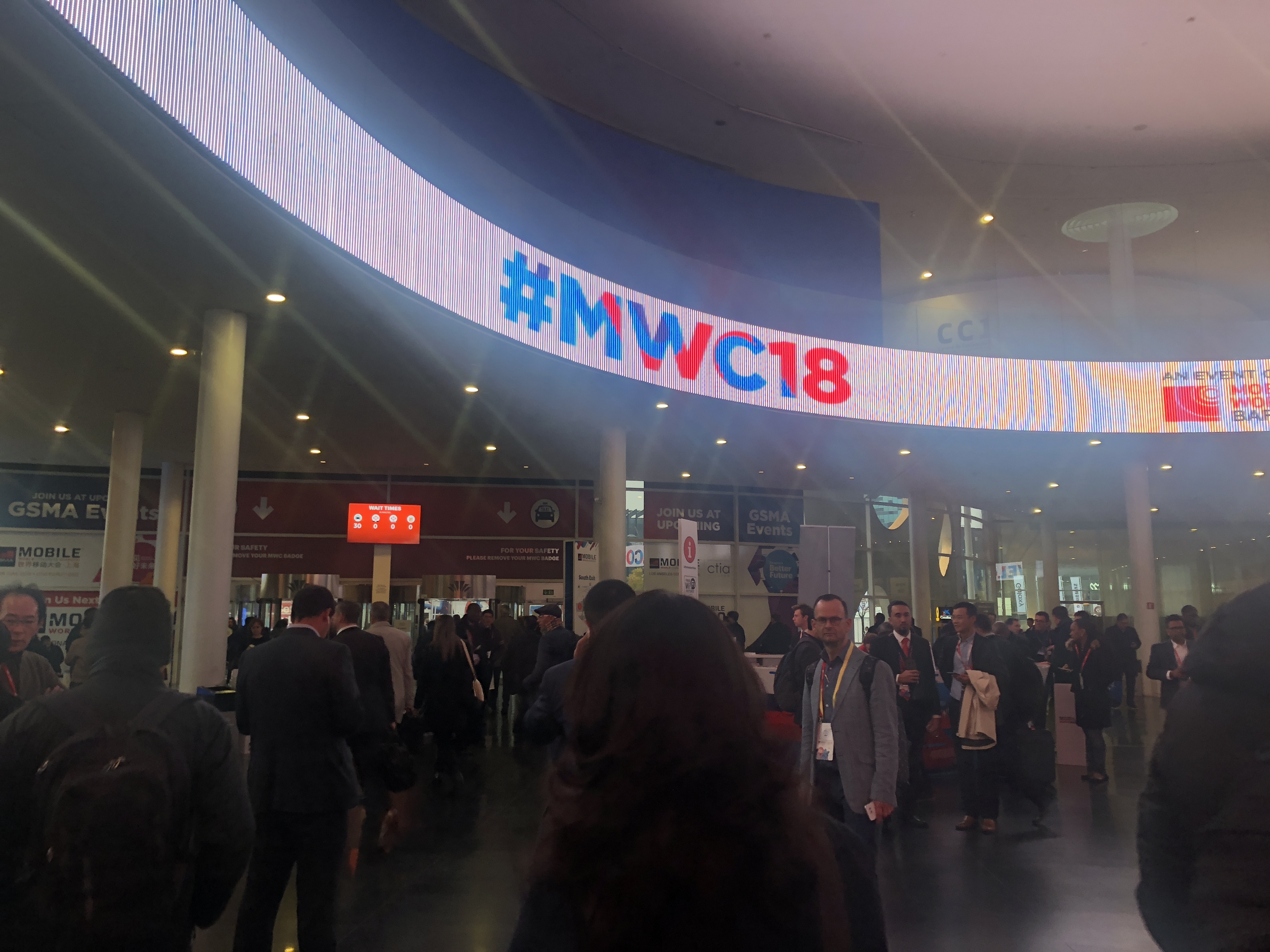
Mobile World Congress (MWC) has got into full swing on the second day in Barcelona. Despite the overwhelming number of stands and vendors at the show, it is obvious what the general consensus of the conference is.
The beauty of MWC is the excitement oozing out of every vendor at the show, demonstrating the latest innovations and what can be expected for the next year in the technology industry. It comes as no surprise 5G billboards fill the halls at the Fira Gran Via, but there is more than meets the eye behind the capabilities showcased at the conference this year.
From 5G to smart cities and artificial intelligence, MWC has it all. But, what are the big talking points to take away from Barcelona this year?
Connectivity
A key trend across vendors at MWC is connectivity and the number of connections growing. It is no longer just about the connectivity of individual devices, but how devices connect between one another as well.
In the growing age of IoT, the need for devices to communicate together is crucial now more than ever before. From an era when devices ceased to exists, today individuals cannot live without them and MWC has demonstrated this is only going to continue.
Thriving in the digital world is the ability to connect anywhere, anytime, no matter where in the world you are or what you are doing. NETGEAR demonstrated its hotspot router, which can reach speeds of up to 1Gps. The pod is on offer to business customers primarily, with the capability of 20 devices connecting to it, as well as external smart devices such as cameras. The provider argued that the ability to connect is more crucial than ever before, thus creating the router that enables reliability and flexibility wherever individuals go.
 VMware also touched on the topic of connections expanding to ensure devices are accessed anywhere, anytime. Ultimately those leading edge organisations that allow you to access any device in any location, next generation work force is seeing work as an experience not a destination and the access to mobile devices is needed wherever we are.
VMware also touched on the topic of connections expanding to ensure devices are accessed anywhere, anytime. Ultimately those leading edge organisations that allow you to access any device in any location, next generation work force is seeing work as an experience not a destination and the access to mobile devices is needed wherever we are.
“The access to mobile devices is needed wherever we are, next generation work forces are seeing work as an experience not a destination. It’s those organizations that allow you to access any device, in any location that will succeed,” Greenwood said.
5G as a service
For a long time 5G has been known as the network needed to push the boundaries of communication and connecting devices, but MWC has demonstrated it is about so much more than that. The use of 5G is not just for connectivity and telecoms, but bringing together innovative capabilities from every industry.
Throughout day two of MWC, 5G has been branded the necessity to the success of the latest innovations in the Internet of Things (IoT) world. The number of devices is inevitably increasing, thus the capacity that can carry and hold the data from one to another.
Duncan Greenwood, Vice President EMEA End User Computing at VMware, said: “The theme of 5G is critical, I don’t think IoT can achieve what we think it can achieve until 5G networks are fully implemented and installed.”
Although the technology seemingly still has a way to go, attendees at MWC are confident that the technology will enhance the services they offer. As well as enhancing them, is the key element to making a success of them.
Blockchain
Just last week the UK Treasury Committee called for an inquiry into the benefits and limitations of Blockchain and crypto currencies. Now, it’s streamlining the headlines at MWC 2018.
Businesses believe Blockchain could bring exponential benefits to operations and services within both public and private organizations. Cisco IoT touched on using Blockchain within smart cities, as an incentive to further developments. Whether it be trading through Blockchain or creating crypto currencies for individual cities.
Using Blockchain within enterprise operations can help minimise the cost of federating and instead co-operate and work together better. David Tennenhouse, Chief Research Officer, VMware, said: “There is a phenomenal opportunity to lower the barriers of Blockchain within enterprises, it is something enterprises can take advantage of, but they want to operate it differently.”
VMware discussed the use of Blockchain under the enterprise umbrella, turning the capability on its head and reaping the benefits from a different angle. How Blockchain has always kept individuals anonymous and transactions visible, but now enterprises explore the opposite option as well as opening up ‘new’ Blockchains for purpose specific operations.
Collaboration
Another one hot on the hit list at MWC is the theme of collaboration. Businesses are recognising that collaboration is really the driving force to many solutions becoming realities and beneficial to customers.
VMware’s Greenwood touched on collaboration with the use of the Workspace One capabilities. taking out the manual processes within a businesses helps workers collaborate to form the innovations of the future. Technology has enabled processes to quicken, whilst ensuring workers are still motivated to work effectively together to bring one collective solutions.
Collaboration is the key element to drive the digital transformation journey for businesses, VMware research found. By giving employees access to employee-centric applications, it gives them the knowledge to collaboratively work together with other colleagues and customers to effectively carry out innovations.
Other ways to collaborate is between businesses, technology enterprises and customers to ensure the best approach is taken to achieve the goal of the business in the most efficient way. Cisco outlined that collaboratively working with residents and business is the key driver to successful innovation within smart cities.
Smart Cities
Every major city around the world has put plans in place for the next generation of smart cities and MWC has gone above and beyond to demonstrate the capabilities possible with smart cities. Cisco IoT really tapped into the technology, demonstrating everything from water supply to tackling fog on the roads.
The focus for smart cities is inevitably to achieve a more efficient and well working city to live in, with the people of the city the driving force behind the ideas. User needs are ultimately the game changer in what innovative ideas smart cities will present over the next year.
What was found as a challenge for smart cities of the future is developing the correct infrastructure to support the innovative ideas. A key driver for smart cities today will be the way infrastructure operates and communicates to give the correct outcome for the experience. If organizations fail to realise the need for correct infrastructure, it is inevitable innovations could cease to fail.






